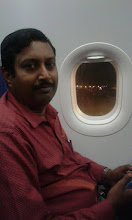Obstructive sleep apnea (OSA) or obstructive sleep apnea syndrome is the most common type of sleep disorder caused by obstruction of the upper airway. It is characterized by repetitive pauses in breathing during sleep, despite the effort to breathe, and is usually associated with a reduction in blood oxygen saturation. These pauses in breathing, called "apneas" typically last 20 to 40 seconds.
SIGNS & SYMPTOMS
The normal sleep/wake cycle in adults is divided into REM (rapid eye movement) sleep, non-REM (NREM) sleep, and consciousness. NREM sleep is further divided into Stages 1, 2 and 3 NREM sleep. The deepest stage (stage 3 of NREM) is required for the physically restorative effects of sleep. NREM stage 2 and REM, which combined are 70% of an average person's total sleep time, are more associated with mental recovery and maintenance. During REM sleep in particular, muscle tone of the throat and neck, as well as the vast majority of all skeletal muscles, is almost completely attenuated, allowing the tongue and soft palate/oropharynx to relax, and in the case of sleep apnea, to impede the flow of air to a degree ranging from light snoring to complete collapse. In the cases where airflow is reduced to a degree where blood oxygen levels fall, or the physical exertion to breathe is too great, neurological mechanisms trigger a sudden interruption of sleep. These arousals rarely result in complete awakening, but can have a significant negative effect on the restorative quality of sleep. In significant cases of OSA, one consequence is sleep deprivation due to the repetitive disruption and recovery of sleep activity.
SIGNS & SYMPTOMS
- Unexplained daytime sleepiness
- Restless sleep
- Loud snoring (with periods of silence followed by gasps).
- Morning headaches
- Insomnia
- Trouble concentrating
- Mood changes such as irritability, anxiety and depression
- Forgetfulness
- Increased heart rate and/or blood pressure
- Decreased sex drive
- Unexplained weight gain
- Increased urination and/or nocturia
- Frequent heartburn or gastroesophageal reflux disease
- Heavy night sweats.
The normal sleep/wake cycle in adults is divided into REM (rapid eye movement) sleep, non-REM (NREM) sleep, and consciousness. NREM sleep is further divided into Stages 1, 2 and 3 NREM sleep. The deepest stage (stage 3 of NREM) is required for the physically restorative effects of sleep. NREM stage 2 and REM, which combined are 70% of an average person's total sleep time, are more associated with mental recovery and maintenance. During REM sleep in particular, muscle tone of the throat and neck, as well as the vast majority of all skeletal muscles, is almost completely attenuated, allowing the tongue and soft palate/oropharynx to relax, and in the case of sleep apnea, to impede the flow of air to a degree ranging from light snoring to complete collapse. In the cases where airflow is reduced to a degree where blood oxygen levels fall, or the physical exertion to breathe is too great, neurological mechanisms trigger a sudden interruption of sleep. These arousals rarely result in complete awakening, but can have a significant negative effect on the restorative quality of sleep. In significant cases of OSA, one consequence is sleep deprivation due to the repetitive disruption and recovery of sleep activity.
TREATMENT MODALITIES
- avoiding alcohol
- Avoiding medications that relax the central nervous system (for example, sedatives and muscle relaxants),
- losing weight
- quitting smoking.
- Some people are helped by special pillows or devices that keep them from sleeping on their backs, or oral appliances to keep the airway open during sleep.
- continuous positive airway pressure (CPAP), in which a face mask is attached to a tube and a machine that blows pressurized air into the mask and through the airway to keep it open.
- There are also surgical procedures intended to remove and tighten tissue and widen the airway, but none has been reproducibly successful.




